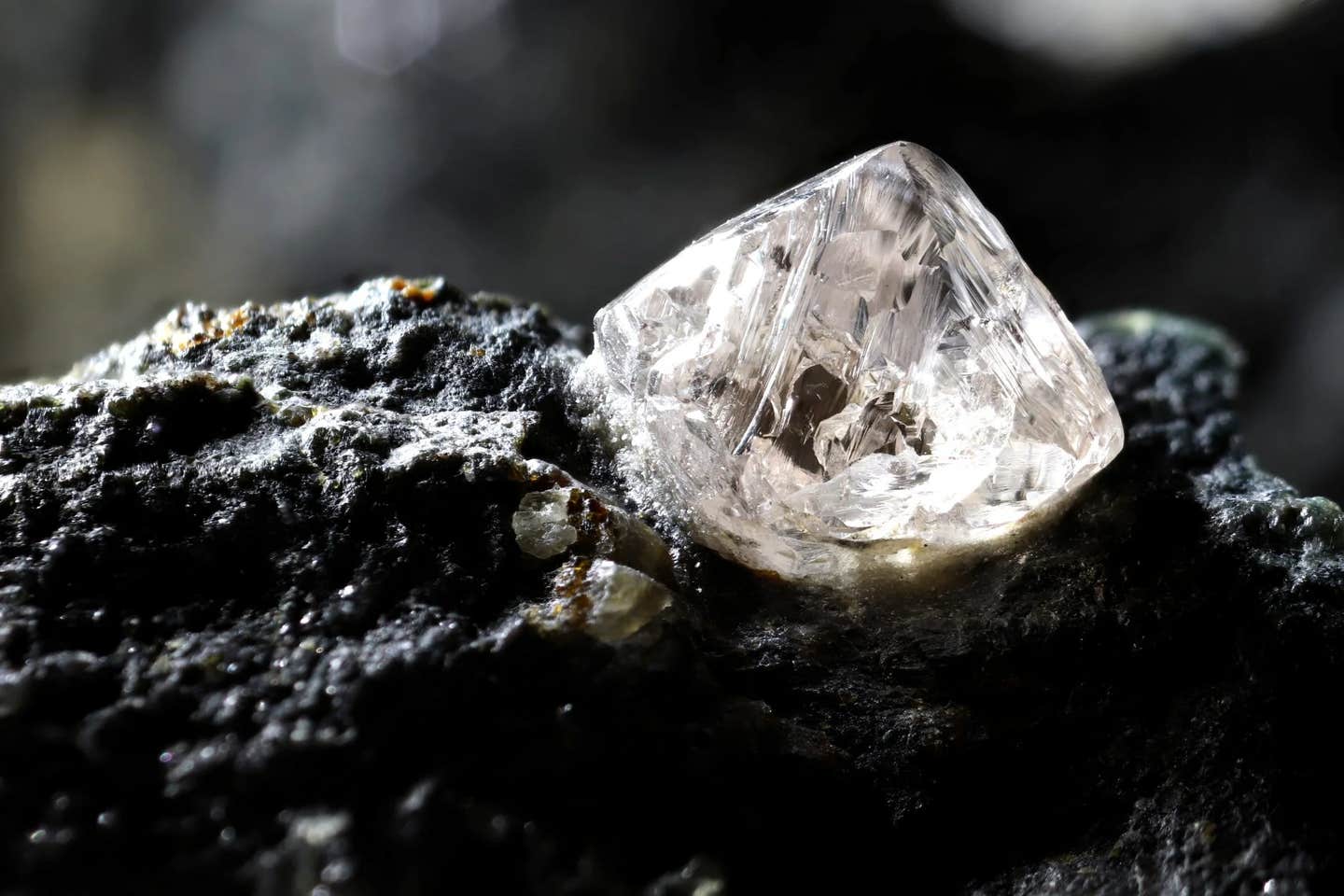50,000-year-old meteorite helps scientists create the hardest diamonds on Earth
The strange crystals hidden in a famous Arizona meteorite have now been recreated in a lab, and they could change how you think about diamonds.

Scientists recreated hexagonal diamond, a form harder than ordinary diamond. (CREDIT: CC BY-SA 4.0)
A mystery that puzzled scientists for more than half a century may finally have an answer. The strange crystals hidden in a famous Arizona meteorite have now been recreated in a lab, and they could change how you think about diamonds.
Most diamonds you know are built from carbon atoms stacked like Lego blocks in a cubic pattern. This makes them the hardest natural material on Earth. But tucked inside a meteorite that hit near Canyon Diablo about 50,000 years ago, scientists found something different—diamonds with a hexagonal pattern, where atoms line up in a honeycomb structure. These so-called meteorite diamonds, or lonsdaleite, were predicted to be up to 58% harder than the cubic form.
For decades, researchers debated whether these hexagonal diamonds really existed in pure form, or if they were simply a messy mix of graphite and ordinary diamonds. Now, a team in Beijing has provided the clearest proof yet.
Cracking the secret of meteorite diamonds
Deep inside Earth, diamonds form about 90 miles below the surface where temperatures exceed 2,000 degrees Fahrenheit. Under those extreme conditions, carbon atoms settle into a cubic arrangement. By contrast, when a meteorite slams into the planet, the violent shock creates an intense burst of heat and pressure. In the case of the Canyon Diablo impact, this environment produced rare hexagonal diamonds.
These crystals sparked excitement because their interlocking atomic layers should resist breaking even better than ordinary diamonds. But for decades, all attempts to recreate them produced only tiny, fragile grains or mixtures. Some experiments even tried explosives or high-pressure blasts of air on graphite targets, but the results fell short.
Using purified graphite as a starting point, scientists led by Wenge Yang at the Center for High Pressure Science and Technology Advanced Research compressed the material in a diamond anvil cell. Then, with a laser providing targeted heat above 2,500 degrees Fahrenheit, they forced the flat carbon layers to buckle into the hexagonal structure.
Related Stories
- Levitating diamonds spin at 1.2 billion RPM to unlock quantum gravity
- Groundbreaking diamond battery generates power from nuclear waste
“At pressures around 20 GPa, the flat carbon layers of graphite are forced to slide and bond with adjacent layers, forming a buckled carbon honeycomb characteristic of hexagonal diamond,” Yang explained in an email to Live Science.
Making the first sizable crystals
The result was a set of hexagonal diamond crystals as wide as 100 micrometers—the thickness of a human hair. That may sound small, but it is far larger than anything achieved before. The crystals were stable enough to be recovered at normal conditions and studied with advanced imaging and X-ray techniques.
Electron microscope images revealed the telltale AB stacking pattern of carbon layers. X-ray crystallography confirmed the hexagonal arrangement, distinguishing it clearly from the ABC stacking of cubic diamond. “This synthesized hexagonal diamond is expected to pave new pathways for the development of superhard materials and high-end electronic devices,” said Ho-kwang Mao of the Chinese Academy of Sciences, who co-authored the work.
The crystals are not perfectly pure. Small amounts of cubic diamond were still mixed in. But the team proved that large, ordered samples of hexagonal diamond can exist, ending a long-running debate about its identity as a real phase of carbon.
Why hexagonal diamond matters
So why should you care about this exotic form of diamond? Hardness is just the beginning. Diamonds are already prized in industry because they can cut, drill, and polish materials that nothing else can touch. They are also excellent at conducting heat, which makes them valuable in high-performance electronics.
Hexagonal diamond pushes those properties further. With stronger interlayer bonds than its cubic cousin, it resists breaking along weak planes. That means future cutting tools could last longer, wear-resistant coatings might endure harsher environments, and electronics could handle even more extreme heat.
Soumen Mandal, a physicist at Cardiff University not involved in the study, called the result “a good first demonstration.” He added, “Now we need pure crystals and more material to start exploring its physical and mechanical properties, thermal properties, electric properties, all of these.”
The long road from space to industry
Back in the 1960s, scientists first suspected that meteorites might hold another type of diamond. The Canyon Diablo fragment provided tantalizing hints, but impurities clouded the picture. For years, skeptics doubted whether hexagonal diamond existed at all.
The Chinese team’s approach was different because they carefully controlled every step. They used high-quality single-crystal graphite, kept pressure uniform in all directions, and monitored the process in real time with in-situ X-rays. By fine-tuning these conditions, they steered carbon atoms toward the honeycomb pattern instead of slipping back into the cubic one.
Although the samples are still small, the breakthrough provides a roadmap for scaling up. Yang and colleagues hope to grow larger and purer crystals within the next decade. Only then will researchers be able to measure the true hardness of hexagonal diamond and unlock its potential for technology.
Looking ahead, applications could range from super-precise machine parts to thermal management in electronics, or even components in quantum devices. “Our goal is to produce larger, high-quality hexagonal diamond samples suitable for real-world applications,” Yang said.
The toughest jewel yet?
Diamonds have long been symbols of beauty and strength. But the discovery that space collisions can forge an even tougher version shows nature still has surprises. By recreating these crystals on Earth, scientists are not only solving a mystery that began with a meteorite strike 50,000 years ago. They are also opening the door to a future where the hardest known material becomes just a stepping stone toward something stronger.
If cubic diamonds were born deep underground, then hexagonal diamonds are children of the stars—and now, thanks to careful science, they may soon be tools in your world.
Research findings are available online in the journal Nature.
Note: The article above provided above by The Brighter Side of News.
Like these kind of feel good stories? Get The Brighter Side of News' newsletter.



